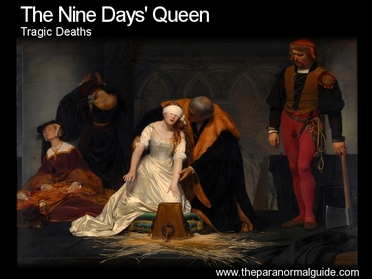
This is her tragic story.
Lady Jane Grey
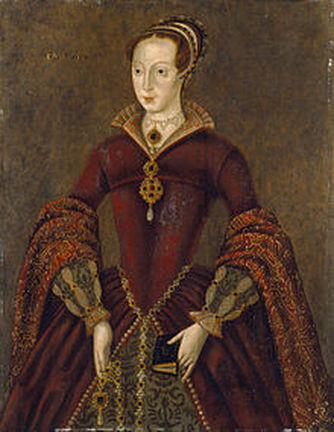 Lady Jane Grey.
Lady Jane Grey. Manner of Death: Beheaded for Treason
Lady Jane Grey, born in October 1537, was the great niece of King Henry VIII. She was used and abused during the tumultuous times which came after Henry VIII died. She has always been a favourite of mine as a tragic figure in history, and I believe she deserves her own story.
Lady Jane is otherwise known as the Nine Day Queen. She spent most of her short life in Leicestershire, on her family’s estates. She was taught Greek, Latin, French and Hebrew, and was said to be exceptionally bright. She was also a very strict protestant. In a time when your religion could change from day to day, she was constant in her protestant beliefs.
At nine years of age she was sent to be a lady in waiting for King Henry VIII’s final wife, Katherine Parr. It is said that Katherine was very much a motherly figure to Jane, and during that time she formed a strong friendship with her cousin Edward, who was Henry VIII’s heir. There was talk quite often of Jane and Edward marrying, and it could possibly have happened, had not a man named John Dudley stepped in and ruined her life.
Trouble Brewing
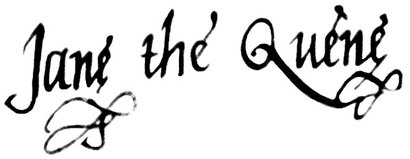 Signature of the Nine Days' Queen.
Signature of the Nine Days' Queen. Not long after Jane and Guildford we married, King Edward died, leaving England in upheaval. On his death bed, Edward has been forced to sign a proclamation, making Jane is heir. Jane was very reluctant to accept the throne, and wanted no part in it, but her ambitious parents and in-laws would not take no for an answer. They spirited her away to the Tower of London – and little did any of them know that she would never leave. Jane believed Mary was the rightful heir, and often spoke badly of the machinations of her father-in-law.
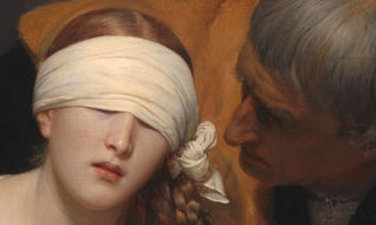
History tells that Queen Mary was reluctant to have Jane killed. That she saw through the deception, that Jane was not responsible for the “usurping” of her throne, and that it was the ambitions of others who forced this young girl’s hand. She therefore did not want to see Jane die. She offered Jane a bargain – convert to Catholicism and she would live. Jane though was resolute in her faith, and refused, so unfortunately Mary signed her name to the death warrant.
Her evil father-in-law got his just deserts in August 1553, being beheaded at Tower Hill. Next to die was Jane’s husband, Guildford, on 12 February, 1554, and Jane was able to watch his execution from her prison window.
Executing the Nine Days' Queen
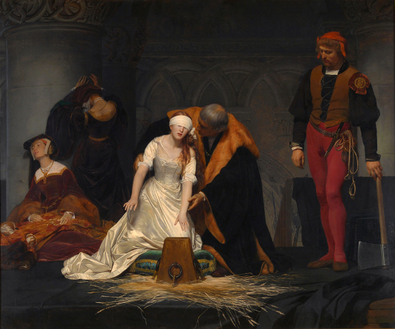 One illustration of the execution.
One illustration of the execution. Jane bravely walked up the stairs of the scaffold, and addressed the small crowd, saying:
“Good people, I am come hither to die, and by a law I am condemned to the same. The fact, indeed, against the Queen's highness was unlawful, and the consenting thereunto by me: but touching the procurement and desire thereof by me or on my behalf, I do wash my hands thereof in innocency, before God, and the face of you, good Christian people, this day.”
In a clear voice she recited Psalm 51 (Have mercy upon me, O God) in English, handed her gloves and handkerchief to her maid and offered forgiveness to the executioner, pleading: "I pray you dispatch me quickly."
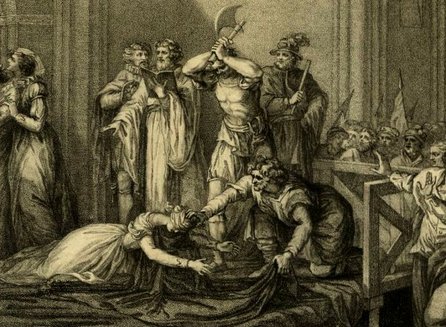 Another rendition.
Another rendition. She blindfolded herself but was unable to find the block with her hands, and cried, "What shall I do? Where is it?"
A bystander, taking pity on the poor, young, victim helped her find her way by leading her hands to the block. With her head down, Jane spoke the last words of Jesus as recounted by Luke: "Lord, into thy hands I commend my spirit!" Lady Jane Grey is known in history as the Nine Day Queen, a poor girl used and victimized as a result of the ambitions of her parents and in-laws.
Jane’s ghost has been seen on several occasions, wandering around the castle, and out on the grounds where she was executed.
Put together by Ashley Hall 2013
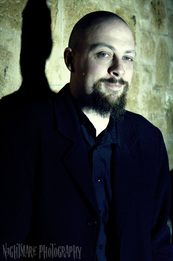



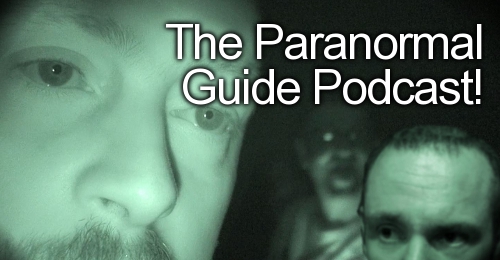
 RSS Feed
RSS Feed
